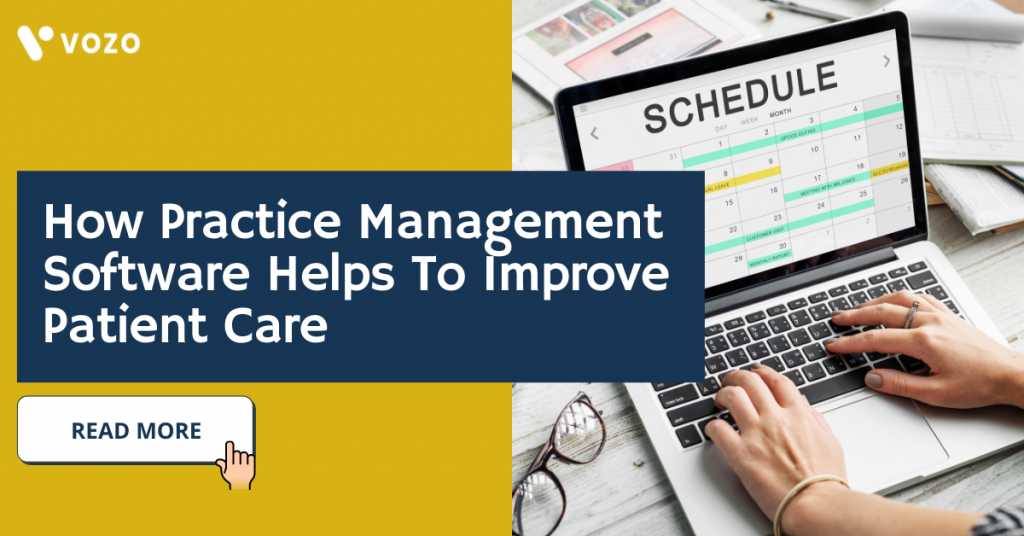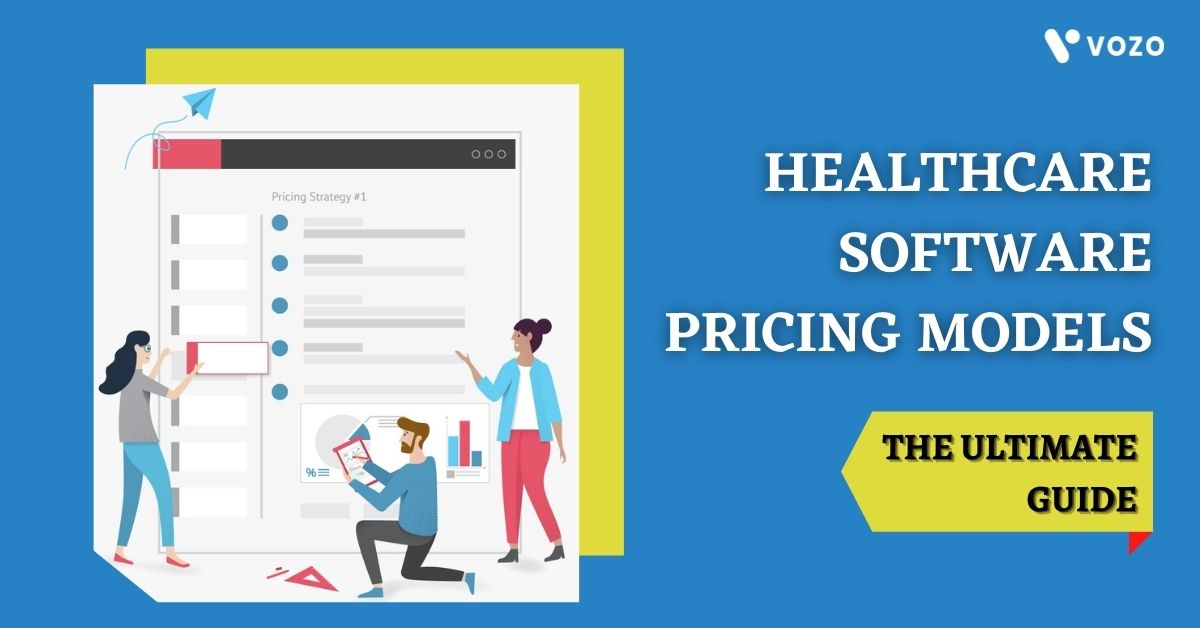The Ultimate Guide To Healthcare Software Pricing Models
Our world is getting overall digitized, isn’t it? Or at least we are traveling towards a place, where digitalization is the king for all the industries, and you cannot disagree with that statement.
With this advent, most industries including healthcare are moving towards digitizing their overall businesses. Even they are forced to shift from traditional ways to using digital systems and healthcare software to achieve greater efficiency and transparency.
What Is Healthcare Software?
Healthcare software is used interchangeably with medical software often. Healthcare software can be defined as any software which is developed for the usage and sole purpose of the healthcare industry.
They both are distinctively developed for simulation and research, training, diagnosis, database storage, and equipment planning related to the medical field. It also refers to decision-support and knowledge IT programs.
Optimizing staff management is achieved by digital technologies in healthcare organizations. And leads to providing better quality care with healthcare software.
So, Let’s See, How Is It Done- The Pricing?
- Even though providing any software available in the market is important, the significance of its pricing is more valuable than that. Pricing always plays a major role in attaining successful money-making growth in the healthcare business.
- Anyways, the cost of buying one software and installing it varies when it comes to the type of deployment.
- There are only two types – on-site and web-based. So you as a healthcare practitioner have to decide that first.
- Then the next thing is, how much this ownership of healthcare software will cost your organization? Hardware, implementation assistance, ongoing network fees with maintenance, and training are the software implementation components to be considered when selecting.
The Top 5 Types Of Pricing Models Used In The Healthcare Software Market, Commonly
1. Subscription pricing
With the increased adoption of cloud-based technologies and their easy usable features, more and more healthcare providers are opting for them. This subscription-based pricing deployment provides monthly as well as yearly subscription licenses.
This is the “good old days” of pricing adoption. They can pay once or monthly according to their convenience and financial ability. There will be no confusion like there in the usage-based calculations and all.
This payment is often opted for by smaller healthcare companies/organizations as its low beforehand costs make it budget-friendly.
2. Perpetual/never-ending pricing
According to a source, “a perpetual license is the ‘traditional’ model used to purchase the software. You pay for your software license up-front and have the right to use it indefinitely. On top of the license fee, you will have the option to pay for one-off implementation services and a support contract, which is renewed annually”.
Only large healthcare companies opt for perpetual pricing type. Because
- Upfront costs – can be larger.
- Recurrent costs – fairly low, as the license fee is paid once, annually.
The conversion to cloud-based software is increasing with vendors these days but still, some offer both subscription and perpetual licenses.
3. Usage-based pricing
It is in the name itself. Usage-based pricing means “pay-as-you-use”. You pay only for what you use. This type of pricing is useful when it is not sure about what features should be used and whatnot.
This usage-based pricing offers an easy-to-understand pricing strategy to customers. For easy understanding by the customers, let’s say, “the more you use it, the more it costs”.
But after all the positive points, we should definitely pinpoint the major drawback of this model. That is the prediction of revenue or return is harder with this type of pricing.
4. Free and open/Freemium pricing
Softwares which are open source, are usually easy and free to download and develop flexibly. Configurations can be made by companies with individual, unique workflows and necessities to meet their requirements exactly without spending so large sum dollars on the license fees.
A company’s in-house IT team can make changes or configurations according to their need but if they don’t have any, the costs for custom development can be heavy.
This model also provides the opportunity to try the product before the customers buy. That way your customers get hooked on what you currently offer and leave them wanting for more even by paying more.
5. Per-user pricing
This pricing model has been the most historically popular one. In this model, the companies offer all benefits and features to customers/users. The pricing changes according to the number of users of this type. But in this new-gen world, with lots of opportunities and choices, it is out of favor now.
One of the drawbacks is, that the customers always look for better pricing. And charging per user will make force them to reduce the number of licenses they buy, to save money.
Then this will make your customers jump from your company to others, resulting in lower business for you. So this type of pricing can be left untouched.
Now Let’s See The Classic Price Ranges For Healthcare Software
Software-as-a-Service (SaaS) is the popular method of software delivery and licensing, accessed online through subscription.
Vendors of healthcare software models offer subscription pricing methods commonly using SaaS platforms. It operates on a fixed monthly subscription and the starting set-up cost is generally lower than the perpetual license.
Let’s see below the typical pricing ranges for some of the healthcare software.
1. Electronic Health Record (EHR) – what it is and the meaning
Electronic Health Record (EHR)/ Electronic Medical Record (EMR) is the digital version of a patient’s paper record. This software helps the healthcare providers or the physicians to manage the patients’ medical records easily without taking much time and increases the provider’s efficiency by automating the clinical workflows.
In simple words, it is aimed at documenting and storing a patient’s medical information/history digitally. This helps to make a more accurate diagnosis and treatment.
EHR/EMR software- how much does it cost?
EHR/EMR software usually functions on two types of pricing models, i.e, perpetual and subscription type of pricing. An EHR/EMR solutions’ rates are based on the particular features used/asked and the number of users/physicians.
The per-user pricing is the most common for SaaS EMR solutions.
RELATED: EHR Software Cost: How To Set Your Budget?
2. Medical billing software- what it is and the meaning
Medical billing is a process that involves third parties like patients or insurance companies. This deals with the submission and following up on claims with the insurance company, to receive payments in contemplation of the service extended by the healthcare provider to their patients.
This medical billing software will help practices to work efficiently as well as maintain transparency. Thi software enables the providers to track the services rendered, verify patients’ insurance, submit claims, etc.
Medical billing software- how much does it cost?
There are two types of hosting services when it comes to the pricing of medical billing software. They are, self-hosted and cloud-based. There is an important cost to be noted when it comes to cloud-based pricing options, i.e, “the cost per claim”.
This comes as an additional cost along with the monthly fee charged for each successful claim.
3. Practice Management (PM) Software- what it is and the meaning
Practice Management Software is one of the software used by healthcare providers which helps them to double up their efficiency and productivity for achieving their desired goal. This software deals with the day-to-day functions and operations of a medical provider/hospital.
It allows the users to schedule appointments, medical billing, maintain the records of insurance payers, report generations, and keep records on patients’ demographics.
These practice management applications can be used by community health centers, private medical practices, behavioral health facilities, long-term care units, hospitals, etc.
Optimize your practice with Vozo’s PMS. Our complete medical practice management software helps you with appropriate charge capture, submitting claims, payment postings, managing collections, collecting co-pays & supports unique billing requirements to get you paid faster and receive higher reimbursements.
Our PM software helps you to deliver better clinical care to your patients with automated patient communication tools. Streamline your practices’ workflow with Vozo Practice Management Software now.

Practice Management Software (PMS)- how much does it cost?
The cost of this particular software differs according to the features used, the size of your practice, and the type of software solution you choose. Among the two types, self-hosting is the most popular with big medical practices and well-established healthcare providers.
On the other hand, cloud-based software also known as SaaS software is common among healthcare providers. This offers monthly or per annum-based payment facilities to providers to get access to the PM software.

An Overview
Looking for an EHR Solution for your healthcare practice? Look no further than Vozo EHR. Our cloud-based EHR solution benefits both providers and patients.
Vozo EHR helps providers streamline and automate administrative tasks and encourages them to focus more on better patient care. With a vast range of features and benefits of Vozo EHR:
- Our telehealth platform enables Patients to care remotely without the need for in-person visits and reduces the cost of practice and patients.
- With appointment scheduling, patients can easily schedule appointments with healthcare providers easily reduces the wait time.
- Connect with healthcare providers conveniently via video call, chat, online messaging, etc without the need to consult providers in person.
- A cost-effective subscription plan benefits healthcare providers of all sizes.
- Vozo EHR can be the backbone of all your healthcare practice needs and requirements.
Vozo EHR helps you to navigate all the potential challenges and provides exceptional service and technical support to make sure you have no burden.
Reach out to Vozo and Empower the Best EHR solution for your healthcare practice.
About the author

With more than 4 years of experience in the dynamic healthcare technology landscape, Sid specializes in crafting compelling content on topics including EHR/EMR, patient portals, healthcare automation, remote patient monitoring, and health information exchange. His expertise lies in translating cutting-edge innovations and intricate topics into engaging narratives that resonate with diverse audiences.













